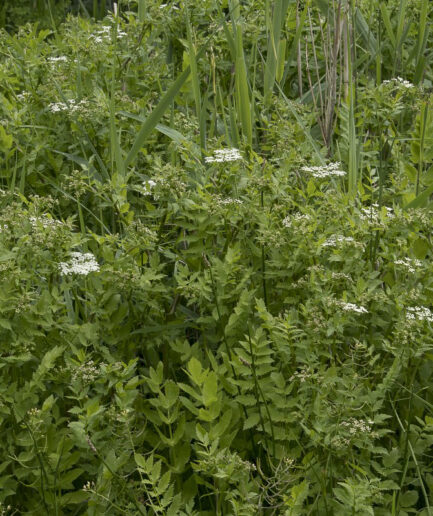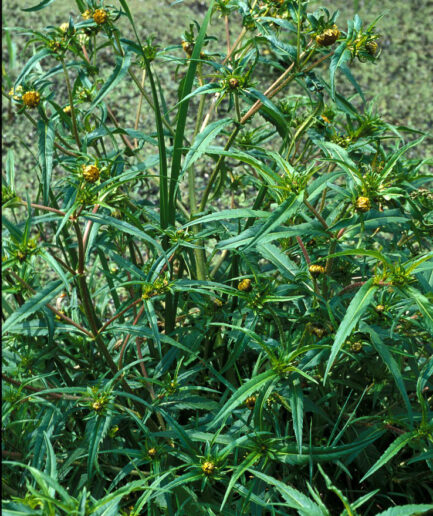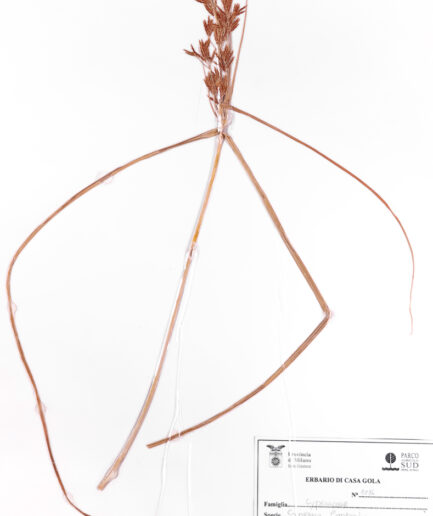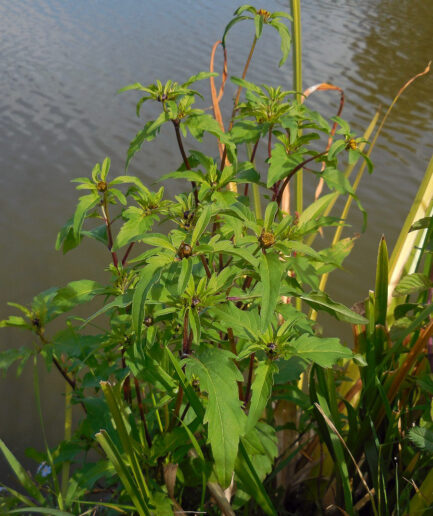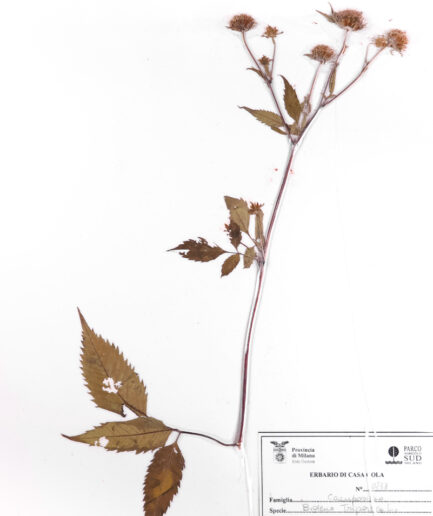Lesser pond-sedge
Scientific name: Carex acutiformis Ehrh.
Family: Cyperaceae
MORPHOLOGY
Habit and dimensions: Perennial herbaceous plant, 50-120 cm tall, stoloniferous, with a very robust long rhizome.
Stems: Robust sharply trigonous stem, erect, rough.
Leaves: Persistent basal sheaths, generally red-striped, translucent, with a strongly concave “V” apex. Leaves 5-20 mm wide, flat or keeled, initially glaucous then dark, often reddish-greenish in the upper part, longer than the stem.
Flowers: Inflorescence green or brown, 20-30 cm long, formed by 2-3 male spikes and 2-4 female spikes. Male spikes clustered, (1) 2-5 (7) cm long, cylindrical or fusiform, dark brown; glumes 5-6 mm, from obovate to oblong, dark purple-brown with a light median nerve, apex from acute to obtuse. Female spikes axillary, cylindrical, 2-7 cm long, 5-7 mm wide, spaced, erect appressed to the stem; glumes 4-5 mm long, from oblong-lanceolate to narrowly ovate, ranging from red to brownish-purple, with a light median nerve, acute apex. It flowers between March and June.
Fruits and seeds: The fruits are pseudanthecia (utricle) (3) 3.5-5 mm, from oval to more or less guttiform, opaque, with prominent nerves, papillose in the apical area, greenish-yellow, with a conical beak from entire to bidentate, 0.5 mm long. Achenes 1.5-1.8 x 0.9-1.1 mm, obovate, brownish or greenish trigonous.
DISTRIBUTION AND HABITAT
Present throughout Italy except Liguria and Puglia. It grows in swamps, ponds, lake shores, watercourses; generally between 0 and 800 m, rarely up to 2,000 m.
Photo: Used under a free license from Saxifraga and Willem van Kruijsbergen, Hans Boll, Jasenka Topic.












